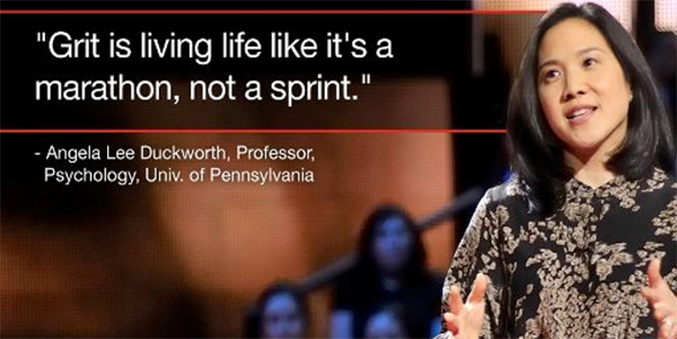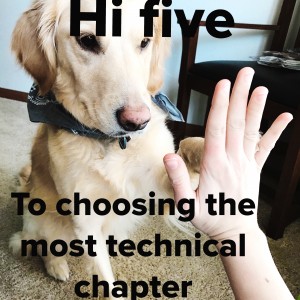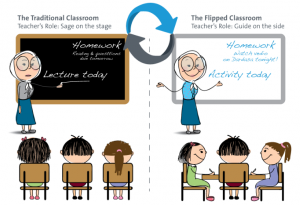
photo courtesy of theberry.com
If Sal Khan stopped after his website was shut down on the exact day he was marketing it to the Peninsula Bridge School,
there would be no 
Ok, maybe not quite that extreme. But how many of us can relate to working so hard on something and not having it go as planned. I know I most definitely can. I remember pushing into a classroom on one of my first days at Kipling, so excited to teach Spanish, with a fancy flipchart that I spent hours on. In my humble opinion, it was perfectly put together- both interactive and engaging (ActiVotes and all!). It did not take long after entering the room to find out that the bulb had just burnt out on the Promethean Board prior to my arrival. Awkward! No matter how carefully we plan for a lesson there are still so many external variables that play a role in the success of our efforts. Things that can oftentimes go unforeseen, as Sal Khan faced when the Peninsula Bridge School asked if his software worked on a MAC computer- leading him to spend an all-nighter hacking his program to make it compatible. He did not see that coming, but the outcome ended up strengthening his program, as it strengthens us as educators.

Photo courtesy of dailyteacher.wordpress.com

Photo courtesy of centerforworklife.com
Angela Lee Duckworth, Grit Ted Talk
As I was reading, Angela Lee Duckworth’s TED Talk on Grit was in the back of my mind. I kept thinking of how Sal must have felt, nervous and excited to bring his concept of flipped lessons and digital learning to the classroom. I also thought of how teachers might have felt, nervous and excited to take on another new program, especially since it is all digital. For some, just the simple fact that something is done on a computer can be intimidating. Even those who consider themselves to be “good” with technology are always learning new things- oftentimes from students! The key to our own independent success is endurance. If we begin to see things as a marathon, rather than a sprint, we can steadily introduce and master new concepts one item at a time.
I know there are teachers who initially may have felt overwhelmed by 1:1 and online educational resources. On my first day of new teacher orientation I was asked to create a twitter account. I had numerous questions about this: What is twitter? What is a hashtag? How will this relate to professional development? And most importantly, how can I ever get what I need to say out in 140 characters or less? Now, tweeting comes as second nature. It’s suddenly so simple! And I know that there are teachers who have grown so much in regards to this. It started with 1 post per week of something exciting in the classroom and now it has developed to the point where twitter is being used as a way to connect in real time with classrooms from all over the world. If the expectation was to start off with advanced Twitter skills there may have been overwhelming feelings of confusion. But instead we all started at square one together with a marathon mentality, mastering basic skills until we found that “Aha” moment. From there, we are able to take it to the next level.

Photo courtesy of http://www.thecarodiaries.com/
The same goes for the kids. When Sal Khan launched Khan Academy at the Peninsula Bridge Program, he was unsure what to expect. He was also unsure where to begin with the control group he had been given. He decided to split them into 2 groups; 1 group begins at Square 1 while the other begins at the 5th grade level. Much like the students that Carol Dweck talks about, those that started at the beginning and filled in gaps as they grew eventually passed those that started on advanced concepts and hit a wall that they were unprepared to deal with.
I bring this up because I see this same scenario playing out in my classroom with a program called Duolingo. On this program, students learn language at their own pace through online lessons. Many students enjoy using this program at home to build on what we learn at school. When students sign up, they have the option to take a placement test, or start from Basics 1. Students can choose which path they would like to follow. Just like Sal mentions in the chapter, I receive a detailed summary of student learning in a spreadsheet and I can see students accuracy as well as how long students are spending on a concept (it’s a beautiful thing). This translates to finding who is stuck and where. I am noticing that students who took the placement test and started at higher levels of Spanish are hitting a wall now that we are a couple of months into the school year, and those who started at Basics 1 are still steadily progressing, and I do not doubt that they may soon surpass those who started at higher levels since they strengthened their foundation. Now it has me thinking, should all students begin at Square 1? Sal explains, “Nearly all the students needed some degree of remediation, and the time spent on finding and fixing the gaps turned out both to save time and deepen learning in the longer term” (Khan, 144).
Relating back to Khan Academy, since I have the privilege of seeing every student in the school, I was able to hear a lot of input from students about Learn Storm. I remember students beaming with pride, telling me that they finished their grade level and moved on to the next grade level. Most feedback from the general population of students, reported that they were making significant progress at a rapid pace. Sal was out to determine “if ‘slow’ students have the opportunity to work at their own pace and build a strong foundation, they could become ‘advanced’ or ‘fast’” (Khan, 146). He found that 10% of students in the program who started significantly below average, and would have tested into a low track, who then turned out to be among the top performers, significantly above average. I am starting to see how this is playing out with language learning, but since I do not teach curriculum that applies to Khan Academy or Learn Storm in particular, I have some questions for those who do.
- In your experience with these programs, do you find your lower students making significant progress once they strengthen their foundational skills?
- Do you find your higher students making the same progress or do they eventually hit a wall?
- Do all students start at Square 1?
- How do you predict the progress will compare in year 2 vs. year 1?
- How do you feel Khan Academy/Learn Storm has either posed an advantage or disadvantage for your learning community?
 propos to be writing a blog post in response to Sal Khan’s chapter entitled, “Embracing Uncertainty.”
propos to be writing a blog post in response to Sal Khan’s chapter entitled, “Embracing Uncertainty.”











